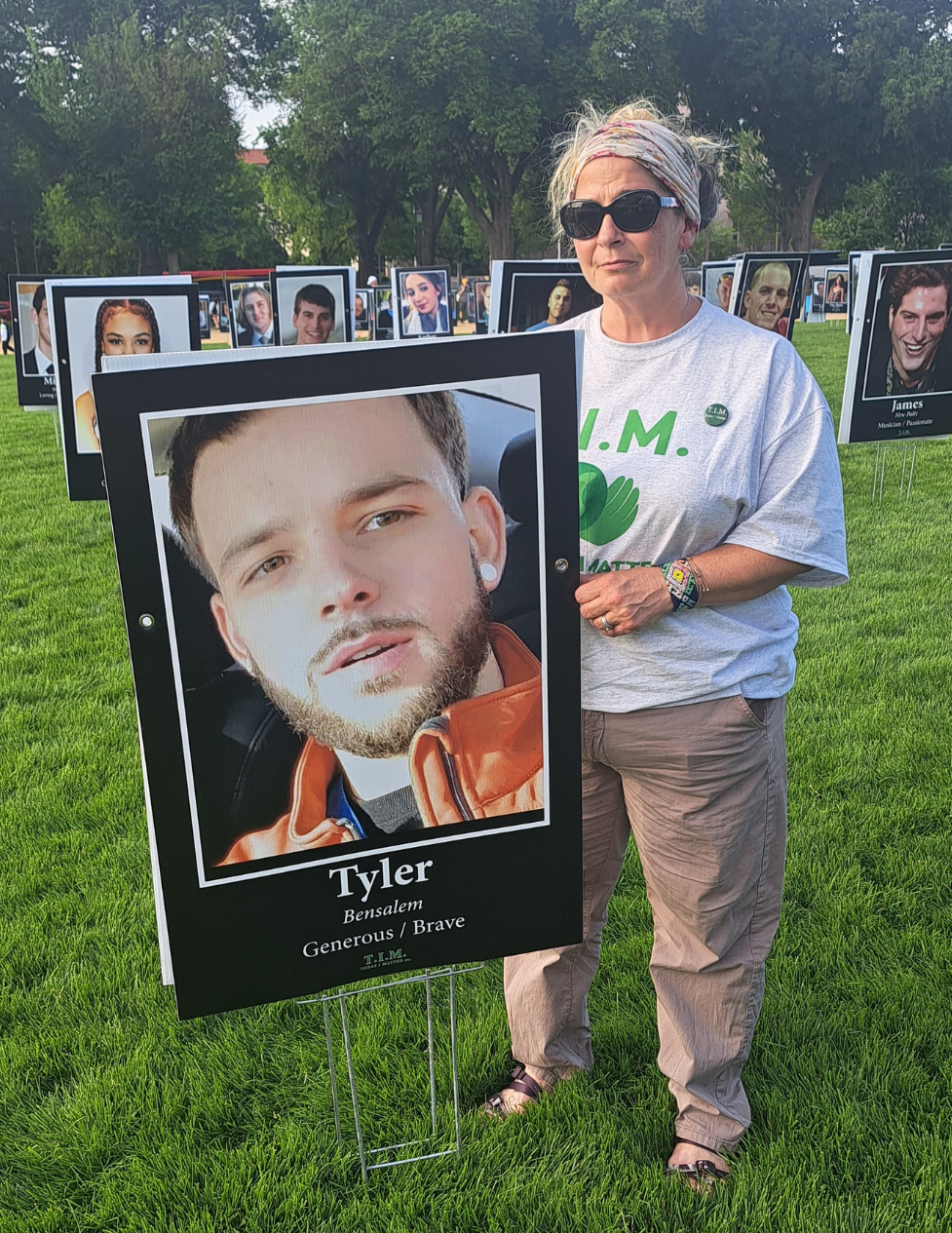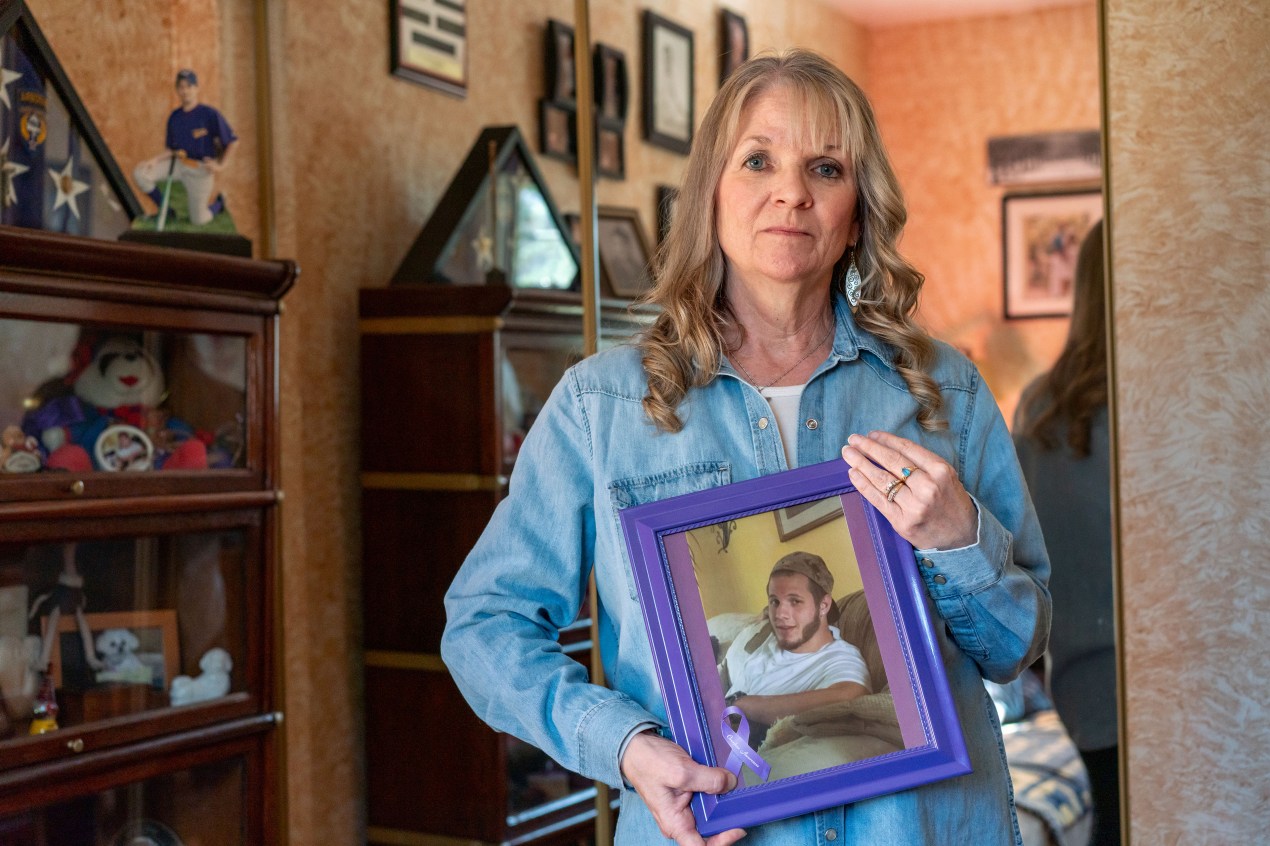State and local governments are receiving billions of dollars in opioid settlements to address the drug crisis that has ravaged America for decades. But instead of spending the money on new addiction treatment and prevention services they couldn’t afford before, some jurisdictions are using it to replace existing funding and stretch tight budgets.
Scott County, Indiana, for example, has spent more than $250,000 of opioid settlement dollars on salaries for its health director and emergency medical services staff. The money usually budgeted for those salaries was freed to buy an ambulance and create a financial cushion for the health department.
In Blair County, Pennsylvania, about $320,000 went to a drug court the county has been operating with other sources of money for more than two decades.
And in New York, some lawmakers and treatment advocates say the governor’s proposed budget for a portion of the state addiction agency’s normal funding.
The national opioid settlements don’t prohibit the use of money for initiatives already supported by other means. But families affected by addiction, recovery advocates, and legal and public health experts say doing so squanders a rare opportunity to direct additional resources toward saving lives.
“To think that replacing what you’re already spending with settlement funds is going to make things better — it’s not,” said , former general counsel for the Office of National Drug Control Policy. “Certainly, the spirit of the settlements wasn’t to keep doing what you’re doing. It was to do more.”
Settlement money is a new funding stream, separate from tax dollars. It comes from that were accused of aggressively marketing and distributing prescription painkillers. States are required to spend at least 85% of the funds on addressing the opioid crisis. Now, with illicit fentanyl flooding the drug market and annually, the need for treatment and social services is more urgent.
Thirteen states and Washington, D.C., have restricted the practice of substituting opioid settlement funds for existing dollars, according to created by and the public health organization . A national created by Johns Hopkins University also , known as supplantation.
Paying Staff Salaries
Scott County, Indiana — a small, rural place as the site of an HIV outbreak in 2015 sparked by intravenous drug use — in opioid settlement funds in 2022.
From August 2022 to July 2023, the county roughly $191,000 for the salaries of its EMS director, deputy director, and training officer/clinical coordinator, as well as about $60,000 for its health administrator. The county also awarded about $151,000 total to three community organizations that address addiction and related issues.
In a discussing the settlement dollars, county attorney voiced concerns. “I don’t know whether or not we’re supposed to be using that money to add, rather than supplement, already existing resources,” he said.

But a couple of months later, the county council .
Council President did not respond to repeated requests to explain this decision. But and said in public meetings that they hoped to compensate county departments for resources expended during the HIV outbreak.
Their conversations echoed the struggles of many rural counties nationwide, which have tight budgets, in part because they poured money into addressing the opioid crisis for years. Now as they receive settlement funds, they want to recoup some of those expenses.
The Scott County Health Department did not respond to questions about how the funds typically allocated for salary were used instead. But at the public meeting, it was suggested they could be used at the department’s discretion.
EMS Chief told Ģą˝Ó°Ôş Health News the money saved on salaries was put toward loan payments for a new ambulance, purchased in spring 2023.
Unlike other departments, which are funded from local tax dollars and start each year with a full budget, the county EMS is mostly funded through insurance reimbursements for transporting patients, Oleck said. The opioid settlement funds provided enough cash flow to make payments on the new ambulance while his department waited for reimbursements.
Oleck said this use of settlement dollars will save lives. His staff needs vehicles to respond to overdose calls, and his department regularly trains area emergency responders on overdose response.
“It can be played that it was just money used to buy an ambulance, but there’s a lot more behind the scenes,” Oleck said.
Still, Jonathan White — the only council member to vote against using settlement funds for EMS salaries — said he felt the expense did not fit the money’s intended purpose.
The settlement “was written to pay for certain things: helping people get off drugs,” White told Ģą˝Ó°Ôş Health News. “We got drug rehab facilities and stuff like that that I believe could have used that money more.”
Phil Stucky, executive director of a , said his organization could have used the money too. Founded in the wake of the HIV outbreak, Thrive employs people in recovery to provide support to peers with mental health and substance use disorders.

Stucky, who is in recovery himself, asked Scott County for $300,000 in opioid settlement funds to hire three peer specialists and purchase a vehicle to transport people to treatment. He ultimately received one-sixth of that amount — enough to hire one person.
In Blair County, Pennsylvania, was frustrated to learn her county used about $322,000 of opioid settlement funds to pay for a drug court that has existed for decades.
“This is an opioid epidemic, which is not being treated enough as it is now,” said Sinisi, who lost her 26-year-old son to an overdose in 2018. The county received extra money to help people, but instead it pulled back its own money, she said. “How do you expect that to change? Isn’t that the definition of insanity?”
Blair County Commissioner told Ģą˝Ó°Ôş Health News that salaries for drug court probation officers and aides were previously covered by a state grant and parole fees. But in recent years that funding has been inadequate, and the county general fund has picked up the slack. Using opioid settlement funds provides a small reprieve since the general fund is overburdened, she said. The county’s most recent budget faces a $2 million deficit.
Forfeited Federal Dollars
Supplantation can take many forms, said , project director of the addiction and public policy initiative at Georgetown University’s O’Neill Institute. Replacing general funds with opioid settlement dollars is an obvious one, but there are subtler approaches.
The federal government into addiction-related initiatives annually. But some states forfeit federal grants or , which is the of mental health and addiction treatment.
If those jurisdictions then use opioid settlement funds for activities that could have been covered with federal money, Weizman considers it supplantation.
“It’s really letting down the citizens of their state,” she said.
Officials in Bucks County, Pennsylvania, forfeited more than $1 million in federal funds from September 2022 to September 2023, the bulk of which was meant to support the construction of a .
“We were probably overly optimistic” about spending the money by the grant deadline, said , executive director of the Bucks County Drug and Alcohol Commission.
Now the county plans to use $3.9 million and to support the center.
finds these developments difficult to stomach. Her 24-year-old son died of an overdose in 2020, and she later joined the , which to spend the funds.
In a September 2022 email to other committee members, she expressed disappointment in the suggested uses: “Please keep in mind, the settlement funds are not meant to fund existing programs or programs that can be funded by other sources, such as federal grants.”
But Rosati said the county is maximizing its resources. Settlement funds will create a host of services, including grief groups for families and transportation to treatment facilities.
“We’re determined to utilize every bit of funding that’s available to Bucks County, using every funding source, every stream, and frankly every grant opportunity that comes our way,” Rosati said.
The county’s demand as much. They say, “Whenever possible, use existing resources in order that Opioid Settlement funds can be directed to addressing gaps in services.”
of Spotlight PA contributed to this report.







